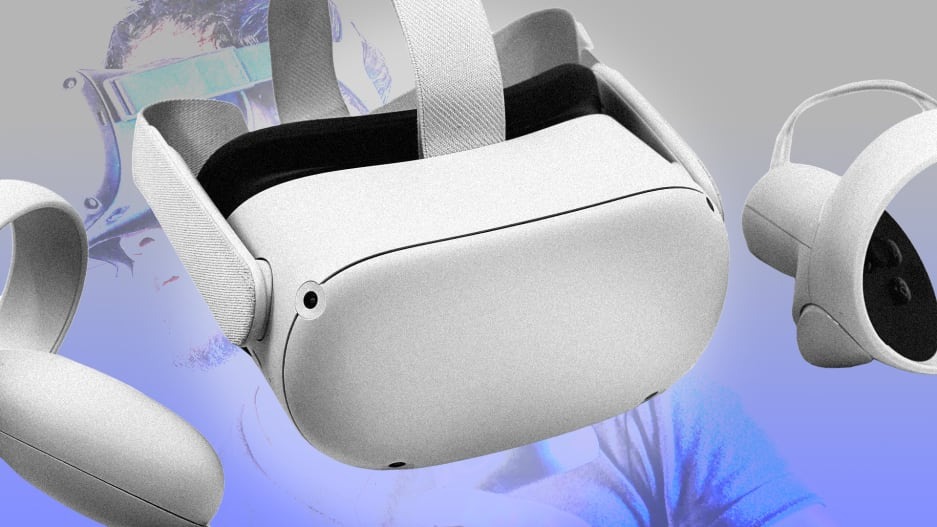- | 8:00 am
Who will win the XR headset wars?
Market saturation is high right now, but history tells us XR will come down to its own “Apple vs. Android” and “Xbox vs. PlayStation” two-horse race.

The race between hardware companies to seize the mixed reality market is on. Giants such as Apple, Sony and Meta are currently jockeying for the lead in XR headsets, but as we learned from the gaming console wars of the 2000s, hardware is only as good as the software it powers. The market is poised for an influx of creative XR development—in gaming, entertainment and productivity—and those results will determine which companies become the long-term winners of the XR headset wars.
The fierce competition over gaming consoles and smartphones suggests there will be room for only a few winners. Market saturation is high right now, but history tells us XR will come down to its own “Apple vs. Android” and “Xbox vs. PlayStation” two-horse race. But there are some clear factors that are likely to determine who those winners will be:
HARDWARE AND FUNCTIONALITY
Software may dictate the limits around the XR headset hardware experience, but inside those boundaries is plenty of room for developers to giddily play with. Nailing the accuracy and responsiveness of motion capture including hand tracking and gesture recognition, eye tracking, and full-body tracking, will be critical for any company hoping to stake out a significant portion of the XR headset market.
Additionally, comfort and style matter. The public has come to expect big tech in small packages, so sleek and streamlined are musts. Consumers simply aren’t going to wear a bulky or heavy headset, even if it delivers on the user experience. The keys: smaller more advanced battery technology, cordless capabilities, and waveguide displays in place of bulky OLED displays. Those developments will take time, but are starting to come together. All that’s left—and this isn’t as trivial as it sounds—is to make it look cool. No XR unit is going to reach critical mass if people are embarrassed to be seen wearing it. Shrink the battery while maintaining hours long life, ditch the cable and make the headset look as cool as Ray-Bans, and now you’ve got something. Still a tall order to be sure.
APPLICABILITY
At this moment, there isn’t an XR headset in the market that hits all the notes. That is to say, current options are either limited to use in the gaming community (Meta Quest and Sony PlayStation) or built for the industrial community (Magic Leap and Hololens). For a system to become ubiquitous, it needs to be flexible and hold mass appeal, with applications across the home entertainment, workplace productivity and communications spaces.
Consider the iPhone. In its earliest forms, Apple offered only gimmicky apps served via the web. It was only after Maps, FaceTime, iMessage and a proper app store were brought to the fore that the hardware took off. Until an AR headset can seamlessly guide us to Dunkin’ Donuts or our favorite vinyl shop, or puts grandma in the room with you for a good catch-up it won’t become a ubiquitous consumer item.
ACCESSIBILITY AND PRICE POINT
The XR headset market has yet to find a middle ground: units are either too cheap or too expensive. Apple’s headset will run consumers somewhere in the thousands—a figure that puts the unit nowhere in the vicinity of widespread public adoption. Meta, on the other hand, offers less expensive gear that falls short on everyday usability, form factor, and the lack of a killer app. Again taking our cues from the developmental arc of the smartphone, the tipping point for XR headsets will arrive when the tech is recognized as small, light, functional and affordable.
DEVELOPER EMPOWERMENT AND APPS
Let’s talk software one more time. No matter how the headset market and the hardware itself develops, the app store will be central to the success of any mixed reality gear. What made Apple and Android the juggernauts they are today is the monetization of their app stores and the seamless purchasing access and user experience.
But to create a successful app store in the XR market, following the smartphone blueprint to the letter will get a company only so far. The ideal approach will be building an empowered ecosystem of developers who are able to freely innovate and create the software that users truly want from a headset. As with the cellphone these will be applications that nobody has even thought of yet. Easier said than done, of course.
WHEN DOES THE XR HEADSET REVOLUTION ARRIVE?
A reasonable estimation is that a widely embraced XR headset model—the kind that can reshape our world in much the way the smartphone did—is no more than five years away. The winners of the headset war will develop the most (and most desirable) apps, the coolest hardware and the widest applicability for users—all at a price that won’t break the bank for the average consumer.
It isn’t too hyperbolic to say we’re on the precipice of a new tech economy and even an entirely new lifestyle driven by XR technology that can reshape our world yet again. It’s exciting to be along for the ride.





































